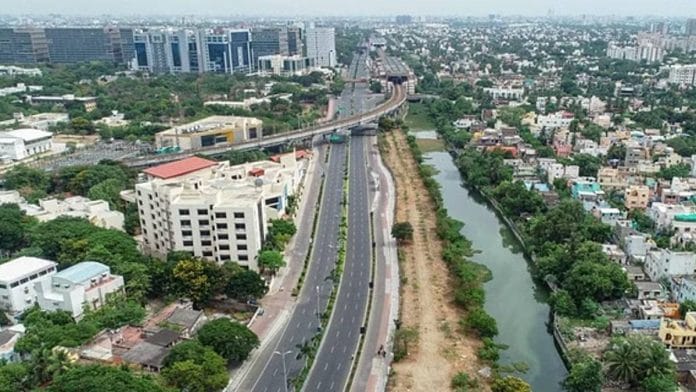New Delhi: With road connectivity, expansion of highways and commercial activity no longer limited to cities, the Union government is working on a framework to streamline development and economic growth in rural areas, ThePrint has learnt.
The Ministry of Panchayati Raj is working on a ‘Model Rural Transformation Act’, which is likely to be ready by December this year, according to a senior ministry official.
The Act, which won’t need to be passed by Parliament, will serve as a framework for state governments to formulate their own Acts for rural development.
“We are working on the Act and should be able to submit it to the ministry by August-end,” N Sridharan, former director of the School of Planning and Architecture in Bhopal, told ThePrint. He is member secretary in an expert committee constituted by the ministry last March to formulate the model Act.
According to the terms of reference issued by the Ministry of Panchayati Raj in March 2022, the Act will provide a framework for states to plan, develop and regulate land use in rural areas (gram panchayats) for economic growth, sustainable development and to enhance the standard of living.
“Under the Act, there will be provision for special spatial plans for gram panchayats. The Act when ready will be shared with the states for comment,” the ministry official told ThePrint.
The model Act comes in the wake of improvement in road connectivity, especially expansion of the national highways network, to rural areas, which has accelerated urbanisation and rapid infrastructure development in these areas.
“The rural areas are fast getting urbanised due to better road connectivity, improvement in services and other infrastructure development. While there are provisions for planned development of urban areas, there are none for rural areas, due to which there is unplanned growth. So, just like urban areas, we have to prepare medium and long-term plans for the development of rural areas,” a second senior ministry official told ThePrint.
The official further pointed to the lack of regulations for village development.
“Many villages, especially those near highways, are already facing problems related to congestion etc., which are mainly urban problems, because of rampant commercial activities. These can only be addressed if proper plans are prepared for villages for the next 15-20 years,” said the second official.
R Srinivas, former town and country planner, told ThePrint: “Planned development of rural areas will bring down the population pressure on urban areas. Apart from spatial planning, there is a need to focus on skill development and help gram panchayats develop areas as hubs of specific activity so that they attract investment and provide employment to people.”
‘Need to create awareness’
A survey by the panchayati raj ministry found that of the 2.55 lakh gram panchayats in India, about 60,000 are located within 1-5 km of national and state highways.
As a pilot project for the model framework, the ministry in 2021 got special spatial plans prepared for 34 gram panchayats spread across 17 states.
For this, the ministry roped in 17 reputed architecture and planning institutions, such as the one in Bhopal, as well as the Indian Institutes of Technology (in Roorkee, Guwahati and Kharagpur) and CEPT University in Ahmedabad.
The first ministry official quoted earlier said: “The idea was to come up with spatial standards for the abadi (habitation) area and formulate norms and details on the kind of infrastructure that would be needed to ensure quality of life and sustainable development.”
The ministry has also asked the 17 institutions to prepare a short film or video on the 34 gram panchayats to show what the present situation is and how it can be improved with proper planning. “The idea is to create awareness among people about the need for planning,” said the ministry official.
Referring to the situation in the “census towns” of India — areas which are not statutorily notified and administered as a town, but whose population has attained urban characteristics — where unplanned development has taken place, Sridharan said: “In the next Census, the number of such towns will be more due to rapid urbanisation.”
“If we want to be a developed nation by 2047, it is essential to plan for rural areas as economic engines to ensure sustainable development. For this, spatial planning of census towns and rural villages is crucial. We need to develop such regions on a par with urban areas in terms of infrastructure,” he added.
(Edited by Nida Fatima Siddiqui)
Also Read: Smart city technologies can tackle India’s urban explosion. But key questions must be asked






